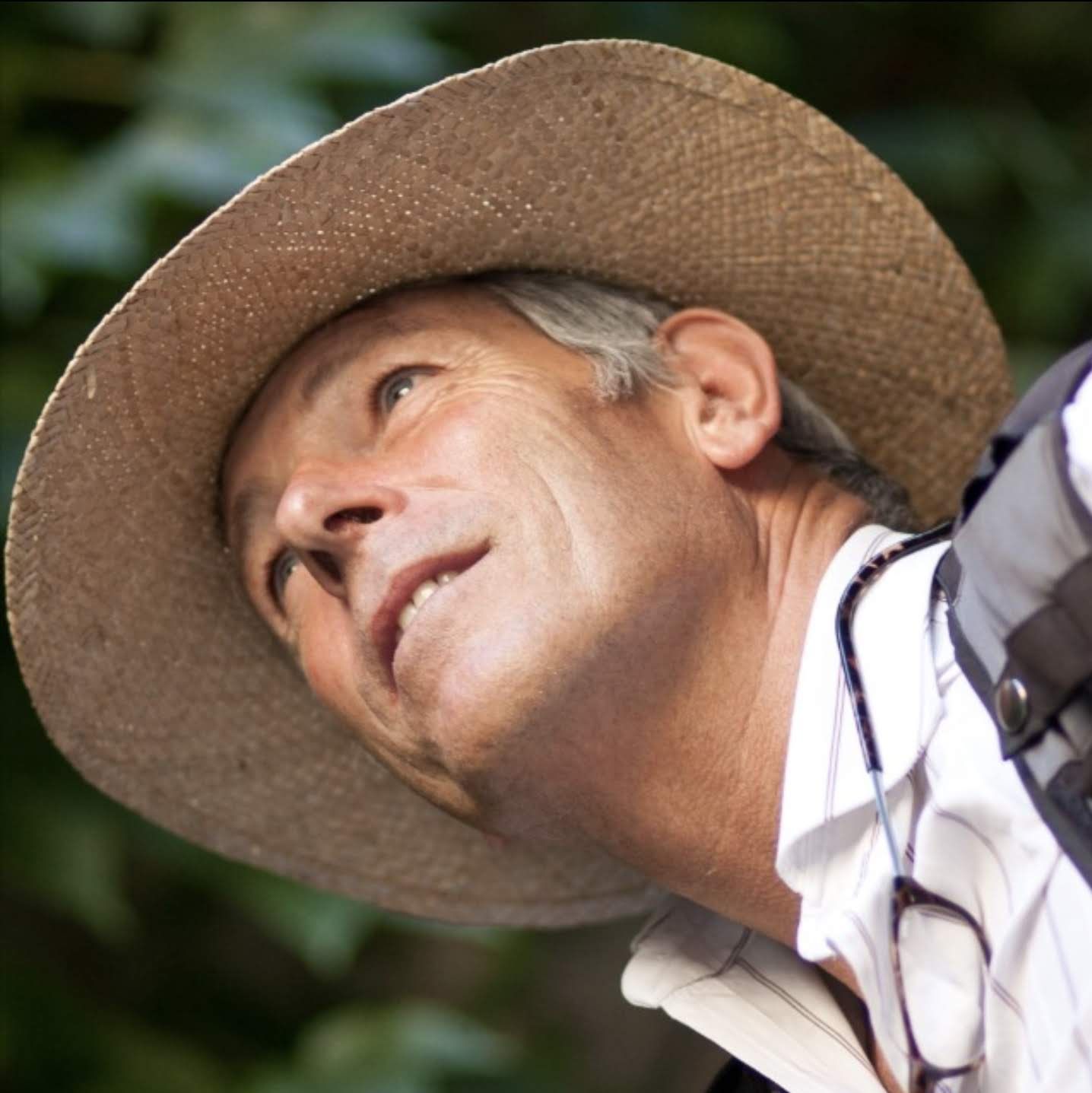Fascisca Updated 2019
Sign of the times
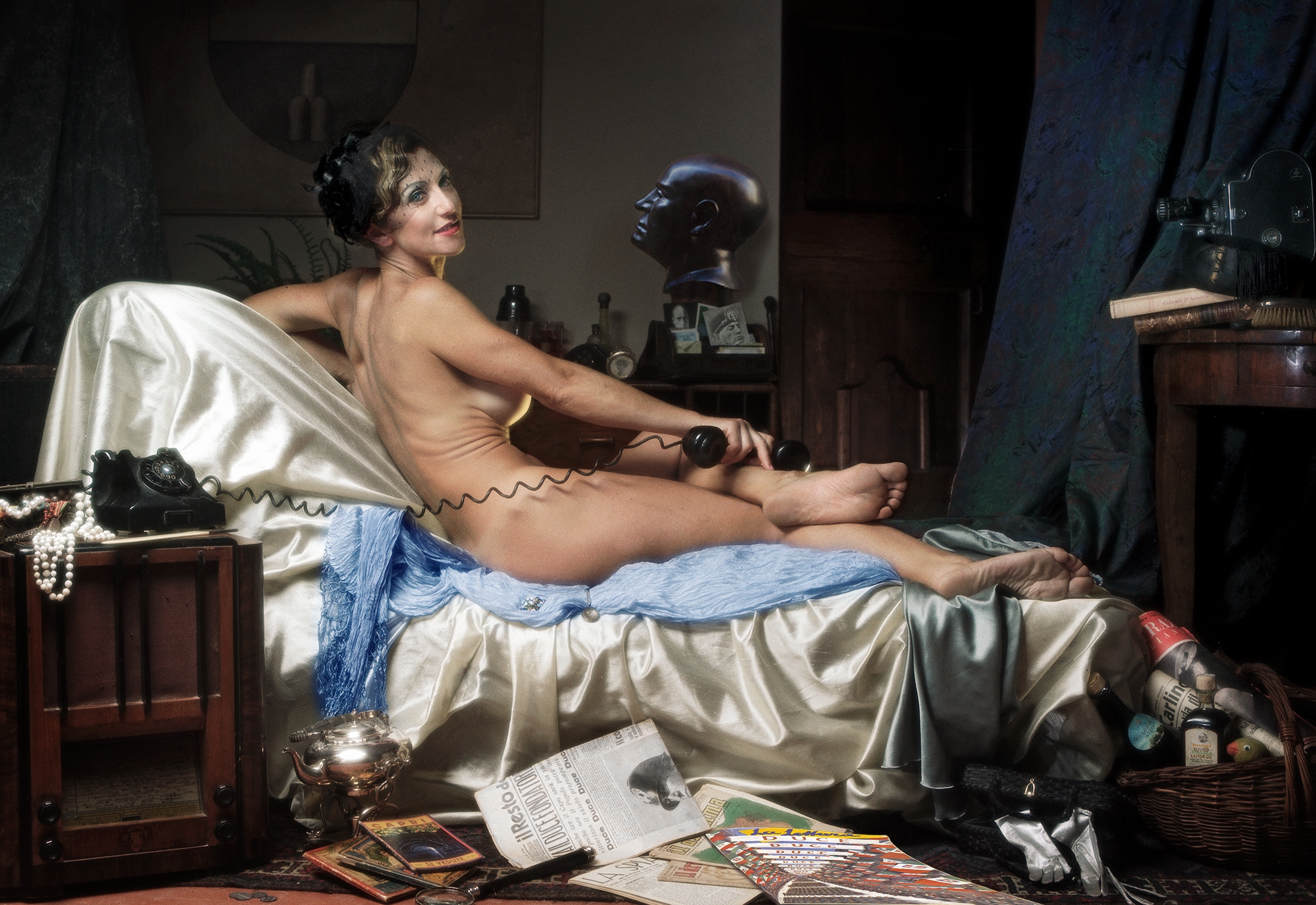
When Fascisca was created back in 2005 it never occurred to me that fascism was anything but a thing of the past, at least for most Italians.
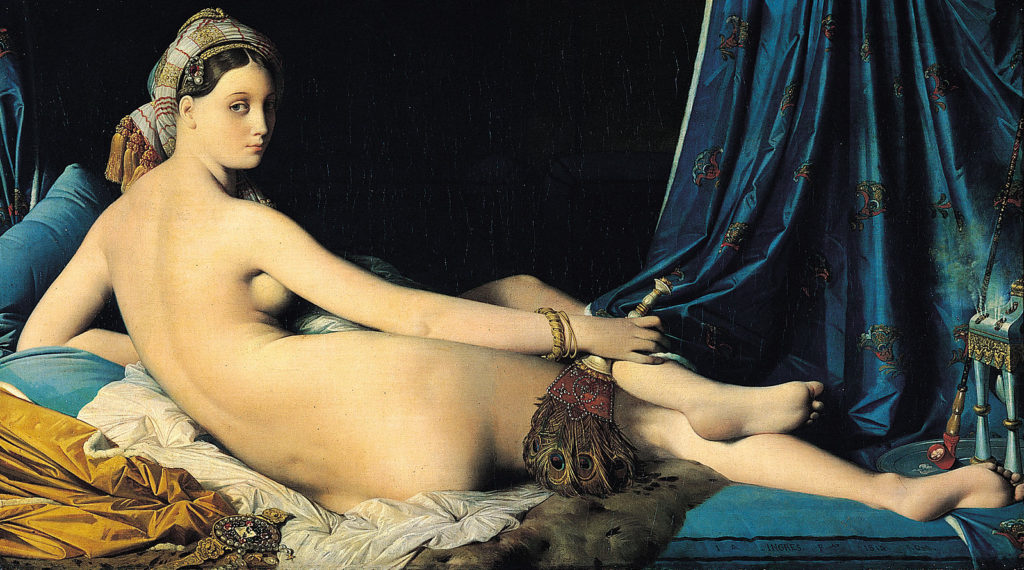
Fascism Returns
However the last two or three years has seen an ever increasing nostalgia for Mussolini and his regime that has seen seen fascism come back into the main stream of political and social life in Italy. My neighbour Antonio in Bolsena, an antique dealer, of sorts, had no less than three busts of Mussolini on display this last summer, all of modern manufacture. He lent me a ceramic one to photograph and insert into this picture. He sold it the next day for €30 – they go like hot cakes he said – anything to do with the ‘regime’ sells well, he tells me.
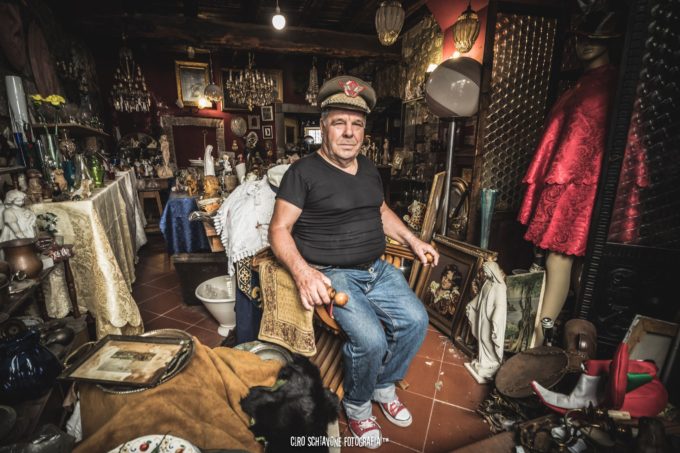
Rachele Mussolini
The original Fascisca was set in a specific year, 1935, the year Italy conquered Abyssinia, Mussolini’s New Roman Empire. The newspapers which refer to the Duce’s victory along with other objects in the tableau were kindly loaned to me by The Mussolini Museum of Villa Carpena, Forlì, once the residence of his wife Rachele till her death in 1979. The Romagna region is known for its powerful women folk and Donna Rachele was no exception. Dictatorial in the home she was even more so outside. For example when Benito was dithering over whether to execute former foreign minister and son in law Galeazzo Ciano in 1944 she insisted on firmness. He was shot in the back in Verona. Her daughter Edda never forgave her. Nasty times.

The museum lent me Mussolini memorabilia
Along with newspapers the museum lent me Mussolini’s black fez seen here on the table (below) with its fascist badge – the fasces or rods bound together with an axe, representing the strength of the group. The book beneath is by the fascist poet Gabriele D’Annunzio. The custodian was also prepared to lend me Mussolini’s jacket that he had worn the evening before his execution in April 1945 – but for some reason I balked at that.
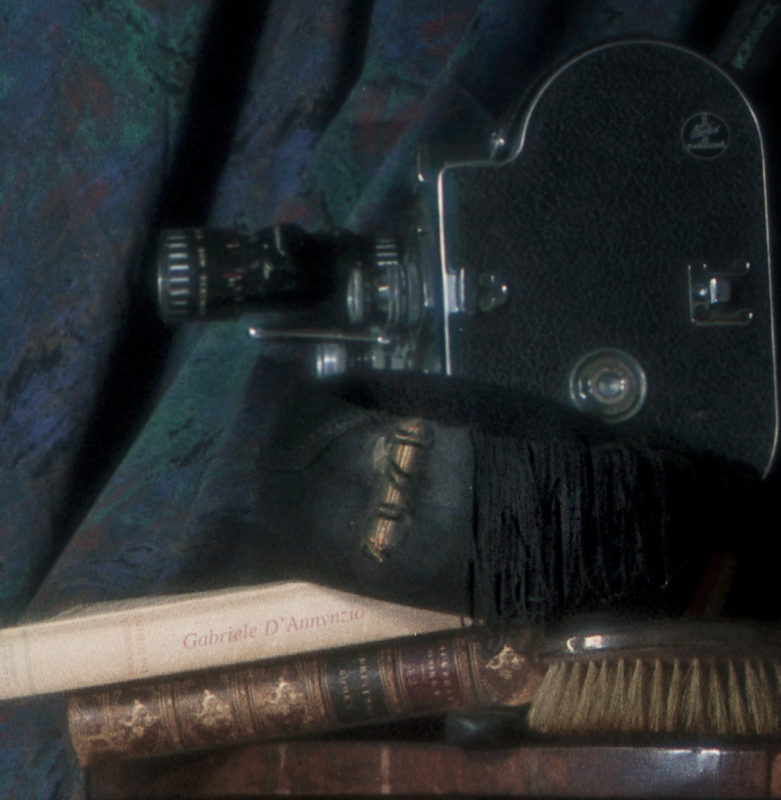
The shopping basket at Fascisca’s feet
The shopping basket contains amongst other things a bottle of castor oil. Fascist ‘squadristi’ would apprehend known or presumed opposers of the regime, drag them into the piazza, bind them, beat them with sticks and forcibly pour castor oil, a powerful laxative, down their throats. That is if they did not just shoot them on the spot as happened in 1921 at the end of our road in Orvieto to hapless lorry driver Giovanni Ciuco because he was a union member.
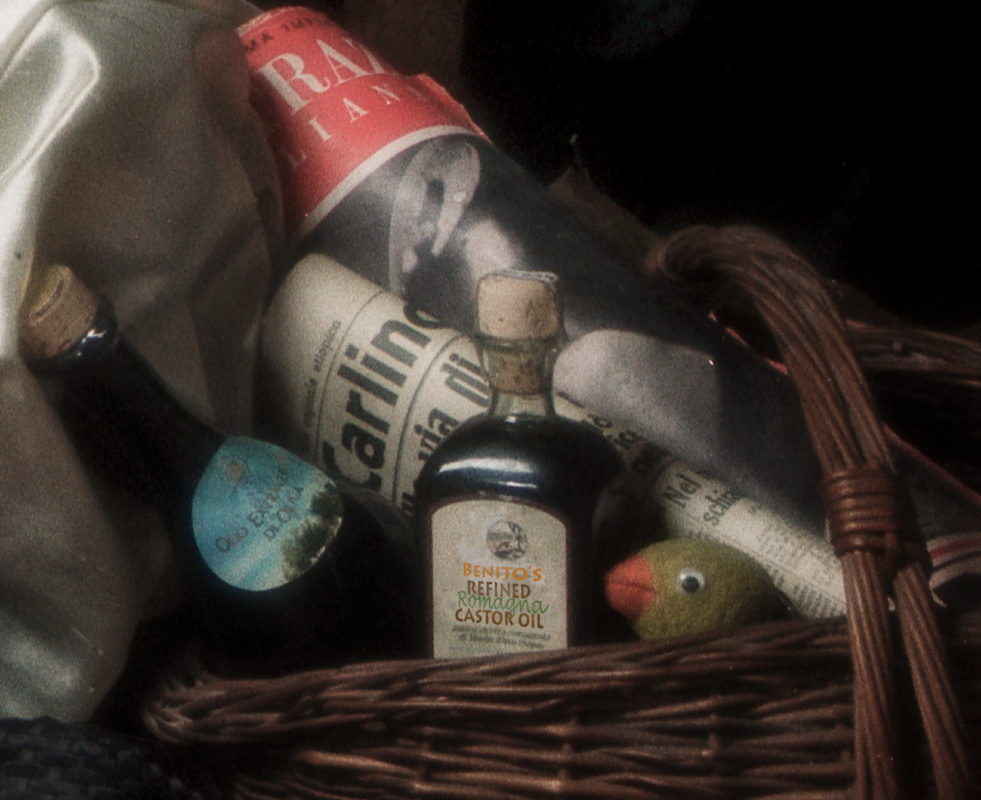
Football fascism
As this is in a way a different picture with a different meaning, a modern nostalgic fascist, I also changed the colour of the shawl on which she is sitting to reflect the colours of Lazio football club – light blue and white. Football is highly politicised in Italy, the two Roman clubs Roma and Lazio stand for left and right – now increasingly far right. When the Lazio gangleader and professional hooligan Fabrizio ‘Diabolik’ Piscitelli was assassinated in a drug connected execution hundreds turned out along the road after the funeral to give the fascist salute while yelling ‘jackals!’ at journalists.

Here we go again?
What will the next general election bring in Italy? In the most recent regional elections of October 2019 the Salvini right triumphed in Umbria once a fiefdom of the left since World War II but of late shaken by corruption scandals. Already the black street vendors have been cleared out of Orvieto.
And anti-semitism is on the rise. The Italian honorary senator Liliana Segre, 89, who survived Auschwitz at fourteen has been offered police protection after suffering volumes of hate mail and tens of thousands of antisemitic messages on social media. Far right and far left seem to unite in their hatred of Jews if for different reasons.
In the UK the police and MI5 have said that the threat by far right terrorists, emboldened by Brexit, has risen year by year since the 2016 referendum.
“For though the world has stood up and stopped the bastard, the bitch that bore him is on heat again.” Bertolt Brecht “The Resistible Rise of Arturo Ui”
The difference between the enthusiastic fascist of 1935 living in a country where the press, radio and cinema had already been rigorously controlled by the fascist party for over ten years, and the nostalgic fascist of 2019, is that now we know, if we choose to.
But neo-fascism is only part of the story. In a way it is just the visible part of something more sinister and more dangerous. As Mark Baum says in the film The Big Short about the 2007 financial disaster, “It was at that moment that he realised that the world economy might collapse.” At the end of the film he says: “I have a feeling, in a few years people are going to be doing what they always do when the economy tanks. They will be blaming immigrants and poor people.”
The banks knew the taxpayers would bale them out, and they did. Only one man went to prison. Economies crumbled. Millions were ruined. World unemployment soared.
The banks are at it again. Fascism is just a symptom. The next meltdown could be total.
Fascisca shoot 2005
Watch the behind-the-scenes video
Backstage video of the Fascisca shoot in 2005. British journalist Nick Farrell interviews 43 year old Cinzia, who works in a high school, before the shoot. What will the headmaster think when he sees the poster of her posing naked in the local newspaper? And the students? And what will her husband think?
Sunday Times – Nasty Times
My first version of Ingres’ Odalisque, Casalisca from 1989 (below) published later in The Sunday Times in July 2005 under the byline “The Paint Strippers. Italian women disrobe for the love of art, giving classic paintings a new lease of life. By Patrick Nicholas, text Nicholas Farrell” It was published the weekend after the London Tube bombings and nearly not published at all as a result. My cover photo Galét was replaced by a photo from an article by Marie Colvin on Palestinian tunnellers of the Infada. However, The Paint Strippers inside went ahead. Marie Colvin was killed in Syria 2012. Nasty times.
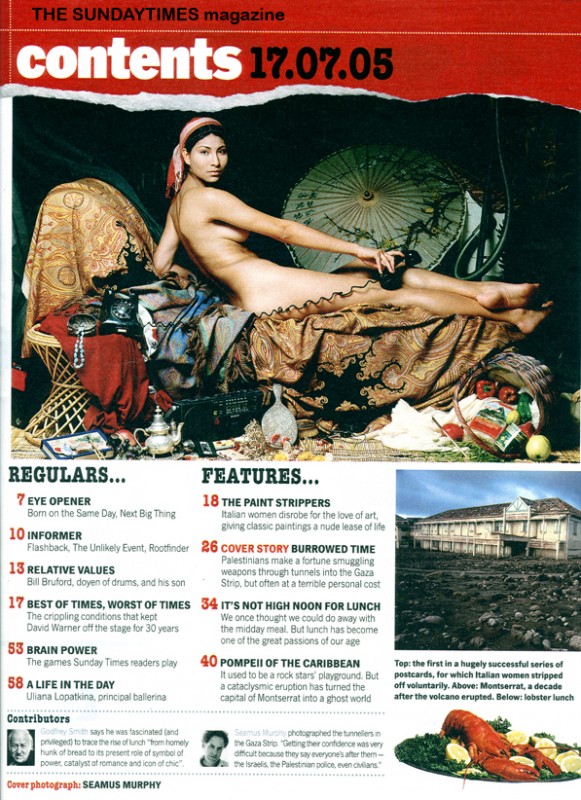
To see Casalisca click here

